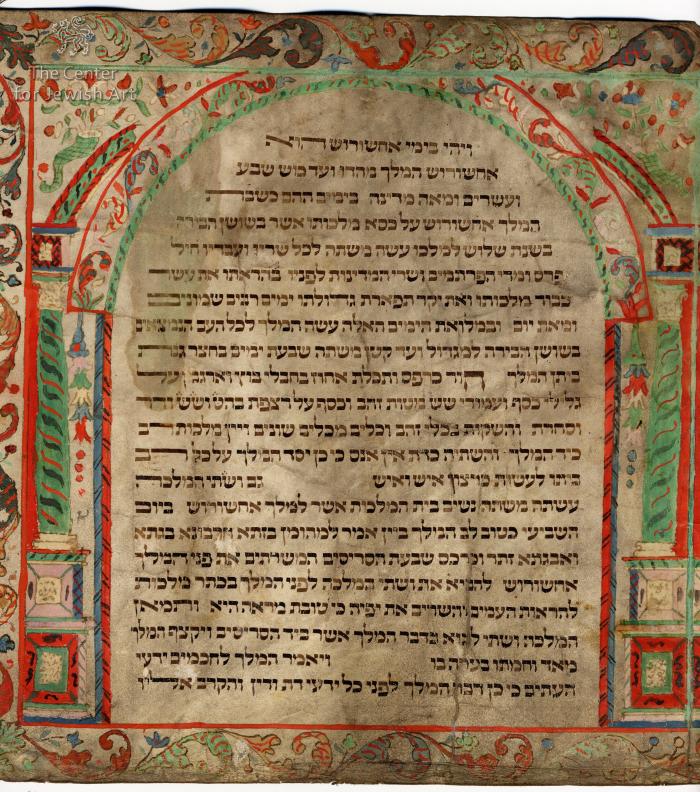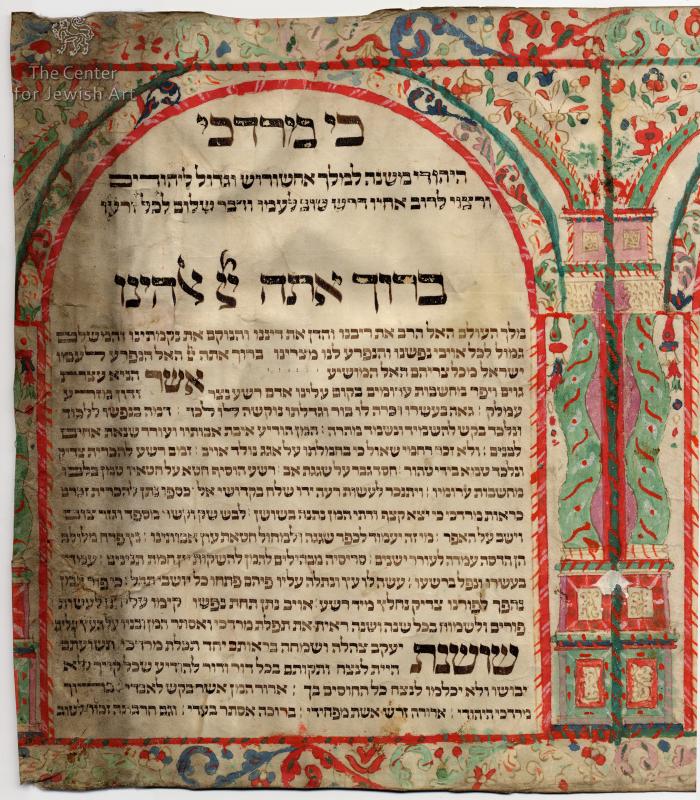Obj. ID: 36683 JMP Esther Scroll with Arcades and Floral Decoration, Bohemia, second half of the 18th century

The Hebrew text of the Book of Esther, initial and final benedictions for the Megillah reading, and a liturgical poem for Purim are written within arcades. The upper and lower margins of the scroll are decorated with foliate and floral ornaments, and the spaces between the arcades are filled with cornucopias with flowers or flower-filled vases. The text panels are separated by twisted columns standing on high bases.
The Book of Esther in Hebrew with initial and final benedictions and a liturgical poem אשר הניא "Asher heni".
The scroll: the text is inscribed in dark brown ink, in Hebrew Ashkenazi and Sephardi stam scripts with tagim added to selected letters only. It is written on the flesh side of parchment membranes that are rather suede.
The first column of the text contains 22 lines.
The letter ח (Es. 1:6) is highlighted by its size - it is larger than an average letter in the scroll and bolded. Other enlarged and diminished letters are included in the Haman's sons section (Es. 9:6-10) that is inscribed in 12 lines; the first and the last words are written separately in the center of the lines, while all remaining lines are divided into two parts as it was commonly practiced in Esther scrolls.
Words כי מרדכי (Es. 10:3) are written larger than the rest of the text in the scroll; they mark the section that should be read aloud by the congregants.
The lines of the text fit the text panels and their length varies.
The ruling - made with a hardpoint - is slightly visible.
The text of the Megillah is preceded by the initial benedictions. Each of them starts with a large word ברוך written separately in the lines. Instead of the Tetragrammaton, a sign formed of two י with a flag from ל letter, and a leg of א letter appears.
In the final benediction that is inscribed in the last panel, the first four words are enlarged; similarly, the opening word of "Asher Heni" poem (אשר) and the word שושנת in it.
None
The scroll was described solely on the basis of images which show merely fragments of the manuscript and do not allow for its comprehensive description.
Another number of the scroll: Ms 439.
The images of the scroll are available on http://collections.jewishmuseum.cz/index.php/Detail/Object/Show/object_id/221252 (accessed on 9.11.2020).





